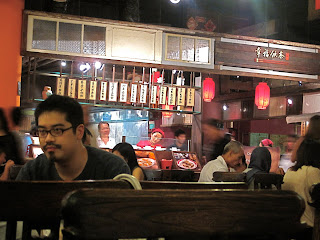Among the homogenous Asian societies, one stands out to be quite culturally and ethnically diverse in its composition. Singapore is made up of Chinese, Malay and Indian ethnic people; and this is what makes Singapore unique. Many people question the traditional values and the existence of a common identity shared by these groups; while others contend that Singapore has lost its Asian characters in the process of modernization trying to catch up with the West. It appears that the focus of the government has been tilted more towards economic development than cultural preservation and cultivation. With this said, the effort to do so is not non-existent. As I navigate for an answer, I see the merit in its government’s policies in trying to construct something distinctly Singaporean and observe the bottom-up evolution of a culture among the people. These two forces are interlaced and mutually reinforcing.
Culture itself is not a static concept, neither is “identity”. Constantly evolving, it is shaped by the people within it. Along with the fast-paced development in Singapore within the last 50 years, this island has created tremendous economic opportunities, hence attracting people from across Asia. It draws people who are willing to work hard to change their lives, people in search of a cosmopolitan lifestyle and of a multifaceted society as peaceful as Singapore. Immigration has constituted and continued to define and redefine Singaporean culture. Looking all around in the region, the countries that accommodate the cohabitation of multiple ethnicities often have a hard time keeping them together, i.e. China and India. The size of the country does matter, as a bigger population breeds a wider range of views and conflicts, but government policies do have a huge impact in creating a nonviolent environment and a rule-based system that would be able to diffuse conflicts and channel opposing viewpoints into something productive and progressive. The system is designed to be able to correct itself to adjust to a balanced midpoint for the good of its people. From here I can tell some observations that I see as uniquely Singapore.
Singlish, or Singaporean English, is the national language, which serves as a medium for its diverse ethnic groups, as well as the medium of international business, science and technology. It is used as an integrative medium bridging these ethnicities, and a typical Singaporean is bilingual. While the use of dual language in school helps ethnic cultures and carry out traditional rituals, it becomes the link most Singaporeans have to their heritage.
In the years that Singapore was striving to achieve economic success, the concept of a “rugged” society was espoused by then Prime Minister Lee Kuan Yew to extol Singaporeans to be tough and resilient, to be rugged enough to face the many challenges on the way to success. I find such guiding principle for developing human capital quite similar to the South Korean way, in which children are raised with the mentality that their nation is still very poor, hence each and every individual is charged with the utmost task of learning, being educated and helping to build the country to match those strong economies in the world. This has produced meritocratic individualism in Singapore today. Singaporeans are developed to be hard working, commerce-oriented and obedient to the law. Under the leadership of an omniscient government, the locals and expatriates alike rely on the rule of law to fulfill their own goals, while respecting the needs of others. Singaporeans don’t only share a language and a well-justified, functional legal system; they also share common institutions such as electoral politics, public education, military service, public housing and so on. Through these social encounters, they strengthen their bond as a community and as a nation. More importantly, these acts of socialization don’t seem anyway to bleach the distinct languages, religions and customs of each ethnic group. Rituals, traditions and simple the way of life as we see in Singapore today can be traced back to the pre-colonial India, Chinese and Malay worlds.
While most countries would rely on a national ideology, such as socialism, libertarianism or kingdom to guide its national values, it seems to have been absent in Singapore. The nation is recognized for its miraculous economic growth, a stupendous system of infrastructure and virtually a cosmopolitan, downtown feel common to any urban city of the West. However, as people are organized into housing blocs, the Asian culture of having nearby food court, newspaper or fruit stalls and “everything” supermarkets never changes.
How has Singapore changed so completely its landscape in such as short period of time anyway? How have the slums of the 1960s turned into modern sterile buildings since the end of the century? How have a Third World turned into one of the First in terms of its per capita income, IMEX, foundation of financial institutions? There is no lack of challenges. Singapore faces the dilemma of how to capitalize on its geography. “Insular” from the world as an island, its small size impels certain dependency on the outside world so as to ensure not to lag behind global movements. Singapore is actively engaged with the Southeast Asian region as well as with the West as one of the financial centers of East Asia. Lee Kuan Yew continues to be of paramount influence in the development of Singaporean culture, as he called for a cultural renaissance in Singapore, where there will be more art exhibitions, jazz bands, museums and alfresco dining. The green city has never lost its charm in my mind since the first time I came. A little bit of adjustments here and there, but it still feels like living in an Asian country with a base of modernization.





No comments:
Post a Comment